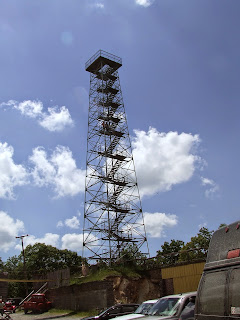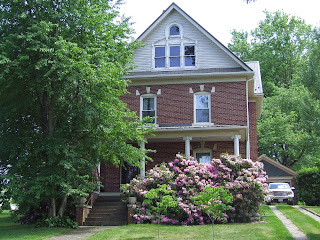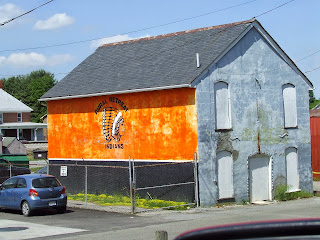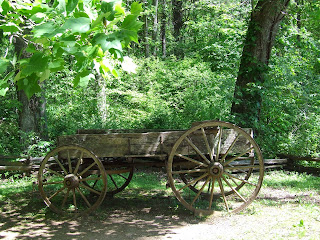Our drive today was a short one, only 120 or so miles from Max Meadow to Lynchburg, VA under overcast skies and some elevated humidity. We took I-81 north and got off on Highway 460 for the remainder of the drive to Lynchburg where we will spend two nights.
Lynchurg was established in 1757 when John Lynch established a ferry across the James River. The town was laid out on 45 acres of Lynch's land where he built the region's first tobacco warehouse in 1785. During the Civil War the city was a supply base for the Confederate Army and it was for these supplies that an unsuccessful Union attack was fought on June 28, 1864. Lynchburg also served as a major hospital center during the War.
After settling in at the Elks Lodge for the next couple of days, we drove to the downtown area of Lynchburg to see what is here. The Visitor's Center sent us to an old home called "Point of Honor" to take a tour and to the Museum located in the Old Courthouse. Unfortunately, the Museum was closed by the time we finished our tour as everything here closes at 4 p.m.
Point of Honor gets its name based on legends of duels that were fought for honor. The house was completed in 1815 and was the home of one of Lynchburg's most prominent citizens, Dr. George Cabell, Sr. a physician and friend to Patrick Henry and a frequent correspondent of Thomas Jefferson. The house fell in disrepair but in the 1970's was restored to its former glory. The house sits atop a high hill overlooking the city and the James River below and stands on a tract of land that was cleared from wilderness where Monocan Indians once camped.
The kitchen building
The carriage house now used as the Gift Shop.
After the tour, we drove around in the area known as Daniel's Hill Historic District. While there were many, many huge old period homes and Victorian style ones, most were in disrepair and needed major work. Very sad to see.
From here we proceeded to the Old City Cemetery which was established in 1806 and is one of the oldest public cemeteries in the U.S. that has been in continuous use since its founding. Nearly 20,000 people are buried here including political, religious, social and cultural leaders, the city's indigent and veterans of every major American war and conflict with three quarters of those buried being African American both free and enslaved. One third are infants and children under the age of four. The cemetery also included a Hearse House and Caretaker's Museum, Station House Museum, and the Pest House Medical Museum. The oldest part of the cemetery contained a number of iron work enclosures for family plots common in most old cemeteries.
Returned to the Elks Lodge and enjoyed a drink and dinner at the Lodge with the locals. There is much more to see here, but tomorrow we will travel 35 minutes to spend the day in Appomatox to see where the Civil War ended.



















































